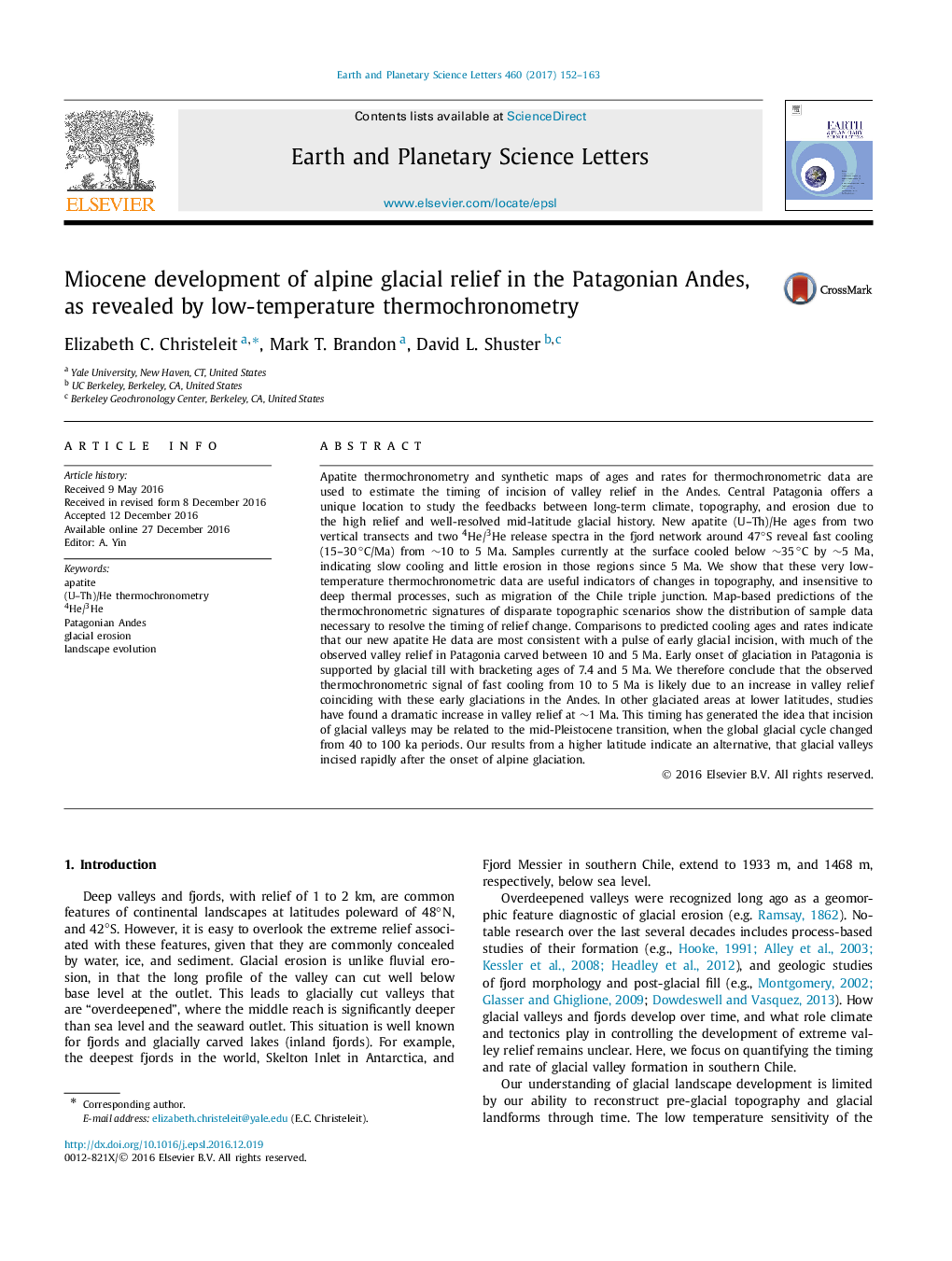| Article ID | Journal | Published Year | Pages | File Type |
|---|---|---|---|---|
| 5779885 | Earth and Planetary Science Letters | 2017 | 12 Pages |
â¢Thermal-kinetic model reveals the resolution of apatite (U-Th)/He and 4He/3He data.â¢Our data require that glacial erosion in the Patagonian Andes proceeded rapidly during early glaciations.â¢Formation of valley relief is the primary change in regional topography since â¼10 Ma.â¢Valley relief in the Patagonian Andes was eroded early, during the late Miocene, and not during the mid-Pleistocene transition.â¢Chile triple junction migration has a minor effect on the temperature of the shallow crust.
Apatite thermochronometry and synthetic maps of ages and rates for thermochronometric data are used to estimate the timing of incision of valley relief in the Andes. Central Patagonia offers a unique location to study the feedbacks between long-term climate, topography, and erosion due to the high relief and well-resolved mid-latitude glacial history. New apatite (U-Th)/He ages from two vertical transects and two 4He/3He release spectra in the fjord network around 47°S reveal fast cooling (15-30â°C/Ma) from â¼10 to 5 Ma. Samples currently at the surface cooled below â¼35â°C by â¼5 Ma, indicating slow cooling and little erosion in those regions since 5 Ma. We show that these very low-temperature thermochronometric data are useful indicators of changes in topography, and insensitive to deep thermal processes, such as migration of the Chile triple junction. Map-based predictions of the thermochronometric signatures of disparate topographic scenarios show the distribution of sample data necessary to resolve the timing of relief change. Comparisons to predicted cooling ages and rates indicate that our new apatite He data are most consistent with a pulse of early glacial incision, with much of the observed valley relief in Patagonia carved between 10 and 5 Ma. Early onset of glaciation in Patagonia is supported by glacial till with bracketing ages of 7.4 and 5 Ma. We therefore conclude that the observed thermochronometric signal of fast cooling from 10 to 5 Ma is likely due to an increase in valley relief coinciding with these early glaciations in the Andes. In other glaciated areas at lower latitudes, studies have found a dramatic increase in valley relief at â¼1 Ma. This timing has generated the idea that incision of glacial valleys may be related to the mid-Pleistocene transition, when the global glacial cycle changed from 40 to 100 ka periods. Our results from a higher latitude indicate an alternative, that glacial valleys incised rapidly after the onset of alpine glaciation.
